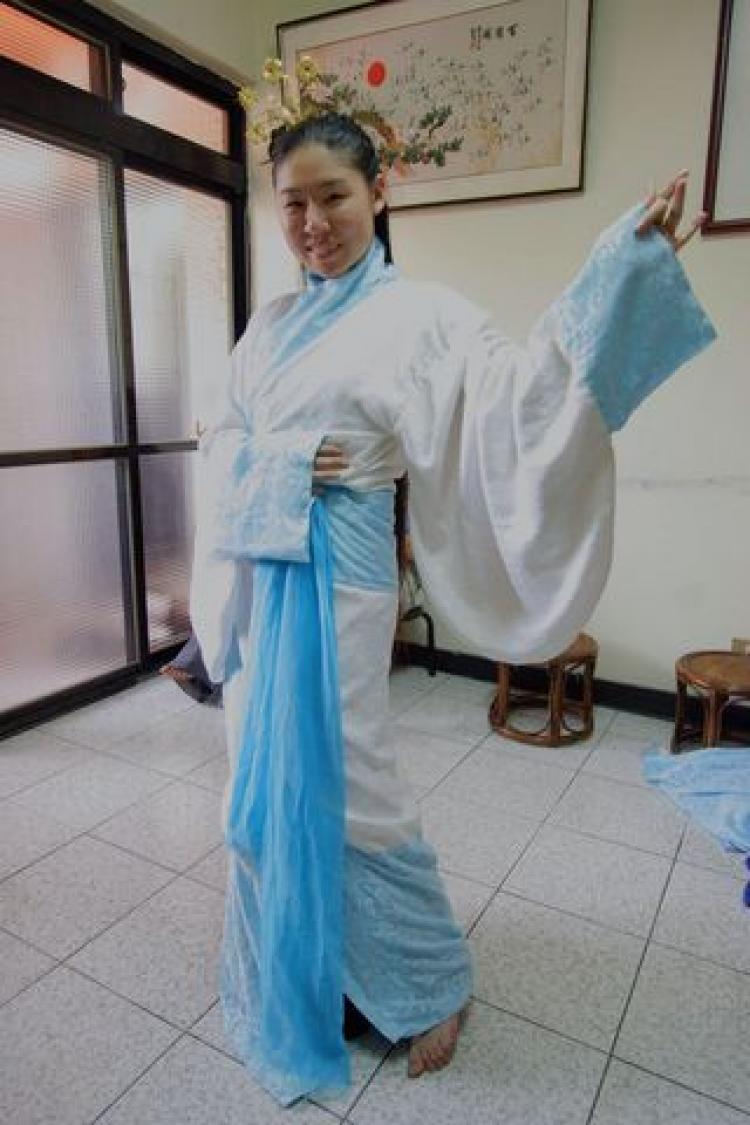Recently, the Association for the Development of the Cultural and Creative Aspects of Chinese Hanfu Dress was invited to participate in a ritual of adulthood, in which people dressed in traditional Chinese costumes performed an ancient ceremony from the Song and Ming Dynasties. A congratulatory speech was made, in the middle period dialect of the Chinese language (formal Taiwanese). Of all the currently recognized rites of adulthood performed in Taiwan, this was the most ancient, modest, and solemn ceremony. Elegant Hanfu pieces were at the core of the ceremony.
Attaining Adulthood Means Responsibility and Obligation
Many styles of adulthood rites have been held in different regions of Taiwan, including “Becoming 16 years old,” held in Tainan, the “Adulthood Rite in Sheri,” held in Kaohsiung County, and the “International Adulthood Rite,” held by the International Rotary Club, developed for foreign students to experience traditional culture. The various rites each have their own unique peculiarities of ceremony and dress, however, apart from a few ritual performers, mostly the young people wear contemporary clothing. In the more traditional ceremonies, contemporary Tang Style Chinese costumes and guapi caps are worn. One rite held at home, in which the honored young adults wore Hanfu dress, was an exception.
The Hanfu dress was daily attire for people who lived in the central part of China during the Emperor Yan and Huang period, lasting to the end of the Ming Dynasty. The dominant features of Hanfu dress are loose and broad sleeves, a crossed collar with the right side overlapping the left side, and pendants on the fringe of the costume. The overall costume is harmonious in appearance, with delicate textures and decorations. People wear different decorations, hats, and shoes, based on their social status. Thus a system was developed that indicated social status through dress. The adulthood rite of the Han race is modeled on this practice. Throughout the ceremony, the candidates wear three sets of hats with three sets of costumes, symbolizing three aspects of social status and related responsibilities.
The ceremony begins with the changing of clothes: the taking off the clothing of children, putting on of formal dress, wearing a broad band around the waist and a towel on the head, the apparel of adults, which represents becoming a grown up. The participants are expected to improve their morality and take responsibility for themselves.
The next phase involves putting on a black colored costume, a leather girdle on the waist, and a scholar’s towel on the head, to represent the gentility of the scholar. It implies that the newly initiated adults should be cautious with their morality, and become more solemn and righteous. They should also be responsible to their families.
The third phase involves putting on trappings: a leather girdle and boots, and taking up a tablet (held before the breast by officials, when being received for an audience with the emperor). Next comes donning a hat (like those worn by traditional officials), which is symbolic of a high rank. This phase symbolizes that the individual has grown up, and has an obligation to defend their country.
After the candidates have been dressed by the elders and have worn the costumes, symbolically they have incurred the expectations of all people. Through the medium of the three sets of costumes with their symbolic representation, they have been formally accepted into society.
Liu is the director of Association for the Development of the Cultural and Creative Aspects of Chinese Hanfu Dress.


